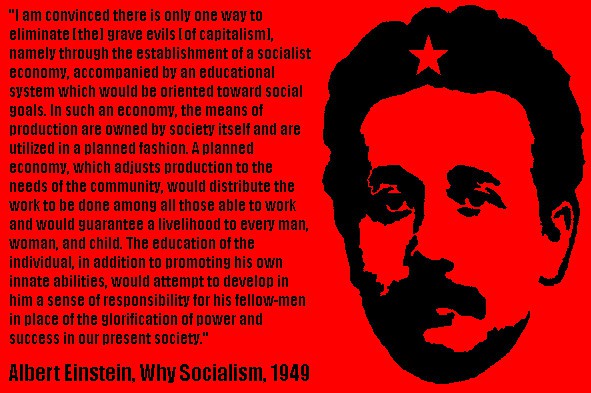Since the publication of Part One of this post a few days ago, President Obama has decided not to nominate immigrant-rights advocate and attorney, Thomas Saenz, to head the Civil Rights division of the Justice Department. Saenz is currently Los Angeles mayor, Antonio Villaraigosa’s chief legal advisor, and he has a long history of commitment to civil rights. Combined with a recent speech in which Obama said that undocumented immigrants had violated our laws and would have to go to the back of the line and apply for legal admission to the country, the rejection of Saenz does not bode well for progressive immigration reform.
Also, since the last post, I have learned that there are labor markets in which native workers have begun to replace immigrants. This no doubt reflects the severity of the downturn, but it also suggests that immigrants are suffereing disproportionately from the economic crisis.
Anyway, here is Part Two of “A Nation odf Immigrants.”
___________________________________________
Third, there has always been anti-immigrant sentiment in the United States, and it has always been based upon false generalizations. None of the things mentioned at the beginning of this post are true. Immigrants pay their own way and then some. Undocumented workers, for example, contribute billions of dollars to our social security trust funds but will never receive a dime of benefits. If an immigrant happens to use my social security number, money will be deposited in my account. I will benefit not the immigrant. If an immigrant picks a number no one has, the monies put in this account will eventually go into the general social security fund. So undocumented immigrants are subsidizing all of our retirements. Immigrants pay sales taxes and property taxes. And they do work that is valuable to the society, work that it is unlikely native-born men and women would do. What often happens is that immigrants fill job slots that native-born workers have abandoned as they have moved into better employment. As a Boston Globe columnist put it with respect to those here without documents:
They perform jobs that are inseparable from our standard of living. Undocumented workers are about 5 percent of our overall labor force but— according to the Pew Hispanic Center’s analysis of Census data—are between 22 and 36 percent of America’s insulation workers, miscellaneous agricultural workers, meat-processing workers, construction workers, dishwashers, and maids. The American Farm Bureau, the lobbying group for agricultural interests, says that without guest workers, the United States would lose $5 billion to $9 billion a year in fruit, vegetable, and flower production and up to 20 percent of production would go overseas.
Mexican immigrants, many undocumented, do most of the drywalling in southern California. They are independent truck drivers at the ports in Los Angeles and Long Beach. They toil in the basements of Korean-American-owned greengroceries in New York City. They are the major part of the manufacturing workforce in Los Angeles. They do the arduous garment work in sweatshops and homes that their Eastern European counterparts did one hundred years ago in the Lower East side of Manhattan. They take care of the children of the well-to-do. They manicure lawns, work in nurseries, break their backs in Midwestern meatpacking and Southern chicken and hog processing plants. They clean our motel and hotel rooms. Indian and Pakistani immigrants drive cabs and the limousines that take corporate executives to and from work in our large cities. Along with Chinese, Vietnamese, and Thai immigrants, they slave away in restaurant kitchens. So do Salvadorans, Nicaraguans, and Hondurans. West Africans labor as grocery delivery men and sell items of all kinds from sidewalk carts. Immigrants do the hard work of the United States, the work the native-born are no longer willing—and with good reason—to do.
Of course, it is inevitable that there is some competition between the two groups, some cases where undocumented workers replace those either born in the country or here through legal channels. Through special visa programs, the United States allows domestic companies and public entities to hire skilled workers such as computer programmers, engineers, nurses, and teachers from countries like India for a fraction of what it was paying its native employees. Here, the domestic workers are clearly hurt by immigrant competition, although the foreign workers are also badly exploited, forced to pay large fees to job recruiters and subject to visa revocation if they make waves at work. Since there are ample reserves of domestic employees in these cases, the competition could be ended if the special visa programs were eliminated or at least altered to demand that employers prove that they cannot hire domestic workers for these jobs. On the whole, though, recent immigrants do not compete directly with native labor. They do work that natives prefer not to do any more (though this may cahnge as the economic crisis deepens), making possible the survival of some businesses, such as manufacturing around Los Angeles, enterprises that either would have died or moved abroad. In addition, as immigrants work and earn and spend money, they generate new businesses and employment.
Fourth, immigrant workers have been organizing to improve their working and living conditions, giving new life to organized labor and other movements for social change. In the past, organized labor, especially the AFL and then the AFL-CIO, has been, with some notable exceptions such as the Industrial Workers of the World (IWW) and the United Electrical Workers Union, part and parcel of the problem of nativism. But in 2000, the AFL-CIO reversed course and demanded amnesty for undocumented workers. Since then, the relationship between groups trying to improve the life circumstances of all immigrants and the union movement has been much warmer and closer. The 2003 “Immigrant Workers’ Freedom Ride,” in which immigrants traveled across the country holding rallies and educating working people about their conditions, and the May 1, 2006 “A Day without Immigrants” strikes and demonstrations, in which five to six million immigrants and their supporters participated, were strongly championed by the labor movement.
Some of the change in attitudes and policies within the house of labor has come from the realization that immigrants hold commanding positions in occupations and industries that unions would like to organize and they are willing, indeed eager, to organize. The workers who remove asbestos from buildings in New York and New Jersey are overwhelmingly from other countries, many here without documents. The Laborers Union has had great success in organizing these workers. They have stood up firmly in the face of strong employer antagonism, even under the risk of deportation. In their homelands, they may well have experienced themselves or known those who have experienced brutal repression for struggling for trade union rights. So employer resistance here is not something of which they are afraid. Similar stories can be told about packinghouse workers, who are trying to build a labor movement in what was once a union stronghold, or hotel and restaurant workers in San Francisco, who have waged multi-year battles to secure union recognition and better wages, hours, and working conditions. Greengrocery store workers, black car (limousine) drivers, and grocery deliverers have all made heroic efforts to unionize. Name a recent labor struggle and it is likely that immigrants have been in the forefront of it. Here is how Kim Moody describes the organization of the “black car” drivers in New York City:
The city’s 12,000 “Black Car” drivers work for fleets that serve corporate customers who want the elegant cars for their executives and clients. But, like the taxi drivers, they are independent contractors who must lease their cars. After paying their lease fees and other expenses they make between $4.00 and $6.00 an hour. Most are South Asians, but there are also East Asians and Central Americans. In 1995, they began organizing themselves. In this case, through an acquaintance they approached District 15 of the Machinists. Unlike many unions in this sort of situation, the Machinists allowed the drivers to organize and lead their own local, Machinists’ Lodge 340. In an unusual turn of events . . . the Machinists won an NLRB case in 1997 declaring the drivers employees. In 1999, Lodge 340 won its first contract with one of the major companies. Resistance from employers was intense, and because many drivers were Muslims they were frequently harassed by the Federal Government after 9/11. Nevertheless, by 2005, Lodge 340 had 1,000 dues-paying members. The effort to organize the whole industry continues.
There is data on the number of immigrants in unions, and it is encouraging. Between 1996 and 2004, the number of immigrants who are union members rose by nearly 25 percent. During this same period, the number of native-born union members fell. The percentage of all union members who are foreign-born also rose, from 9 to more than 11 percent. We do not know how many immigrant union members are undocumented, but given how many they are and where they are working, the number must be considerable.
Finally, it is crucial to understand that what the anti-immigrant movement is really all about is the repression of all workers. The growing desire for unions among immigrants and the threat that union support for them poses to employers (who hold the real power in this society) can be seen in the increasingly aggressive actions of the Immigration and Customs Enforcement (ICE), which has been raiding plants where it believes undocumented workers have been hired. In meatpacking plants in Iowa, Nebraska, and elsewhere, for example, ICE has arrested and railroaded into quick trials thousands of immigrants, who are either deported or put in prison. Not coincidentally, these raids have disrupted union organizing campaigns. In one case, employers hired Somali immigrants from a nearby state, here with documents because they have been declared political refugees. This, of course, created tensions between the new and older arrivals, much to the benefit of the employers, who love a divide and conquer strategy. In a Mississippi electrical equipment factory, ICE raids conveniently helped employers and their rightwing political allies, who are fearful of an alliance between immigrant and black workers that could challenge their power. These raids, which have occurred across the country, are a boon to employers. As Marielena Hincapié of the National Immigration Law Center tells us, “raids drive down wages because they intimidate workers, even citizens and legal residents. The employer brings in another batch of employees and continues business as usual, while people who protest get targeted and workers get deported. Raids really demonstrate the employer’s power.”








Excellent paper Michael; I appreciate the work you do to get this message out. There is so much mis-information out there.